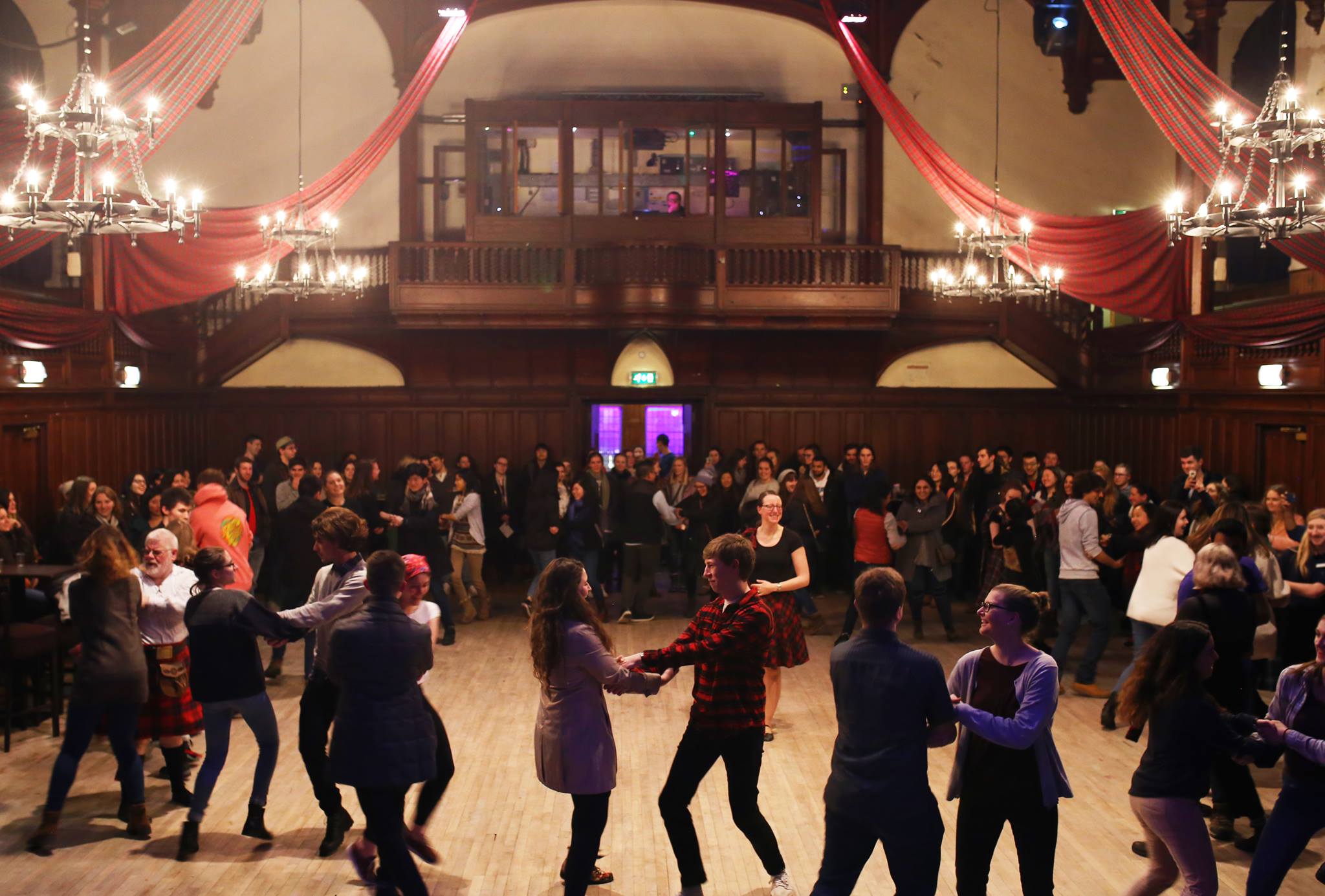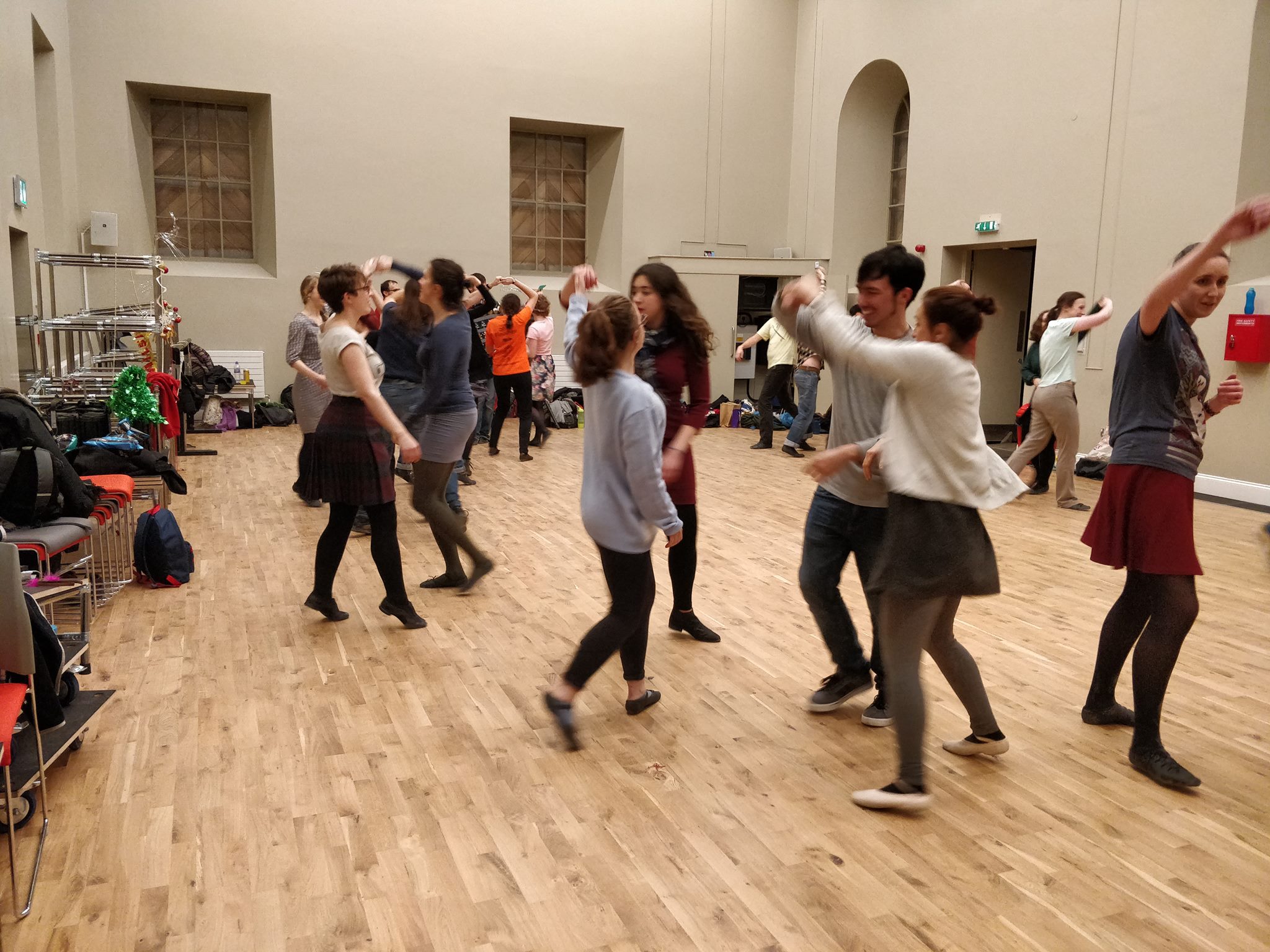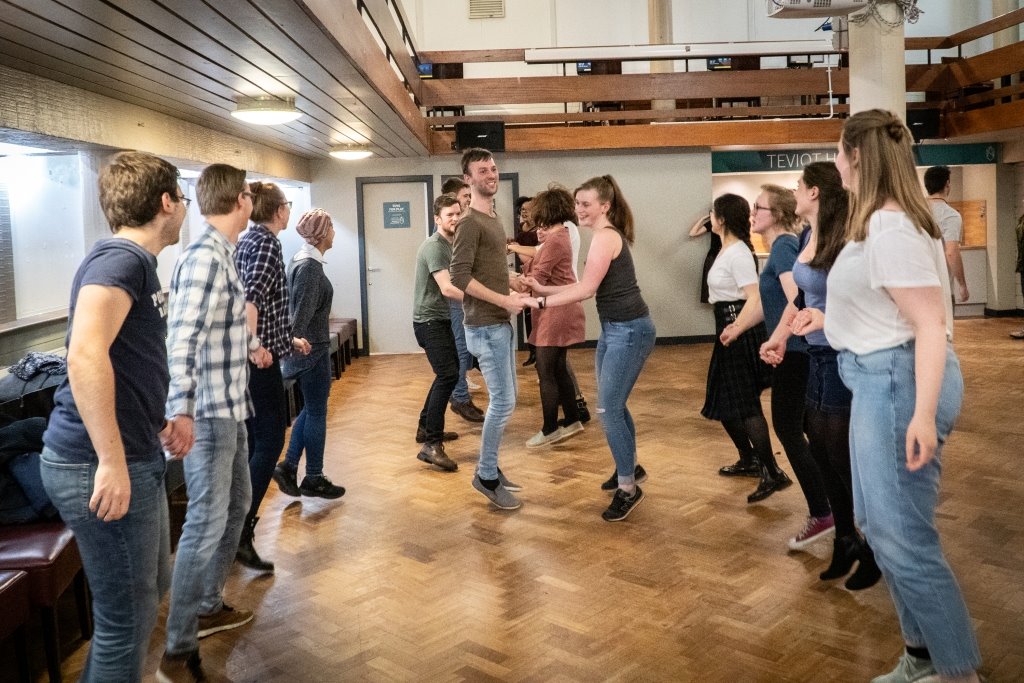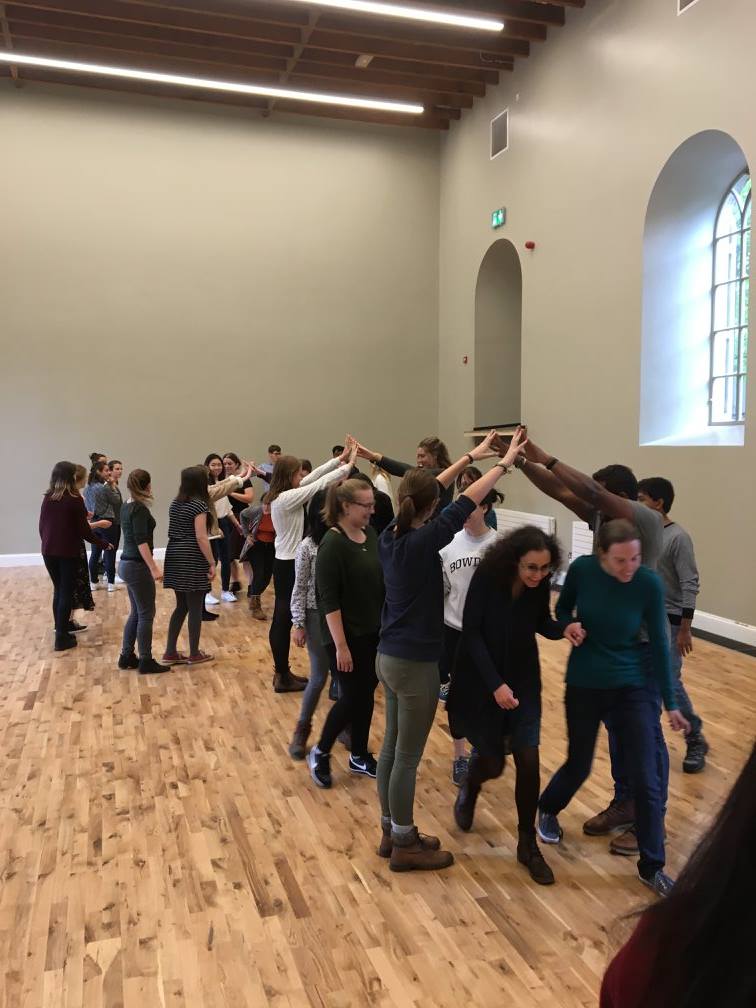
If you’ve never been to a ceilidh, the most important thing to know is that the dances at ceilidhs are for everyone. It doesn’t matter if you’ve never danced before, have two left feet or even three! – everyone is welcome at a ceilidh and you’ll be astonished how hard it is not to end up dancing!
However this section is supposed to explain what ceilidh dancing is so…. Well the best way to find out is to go to a ceilidh! But failing that, if you’ve done some barn dancing, in England for example, then the formations are somewhat similar, but Scottish ceilidh dancing is much faster and livelier. Some ceilidh dances are also found under different guises in other national dance traditions; so wherever you come from you may find some of them familiar.

All dances danced at ceilidhs are made up of a number of ‘formations’ – for example ‘walk forward for four steps’ or ‘circle round and back’. A complete ‘sequence of formations’ is one time through the dance (this is frequently 32 bars of music, for those who think in musical bars), and each dance is danced a number of times though (often eight). Because the dance is repeated so many times you have lots of time to pick it up (there is usually someone on the floor who knows it), so you can get up and try a dance even if you’re not very sure how it goes. There is also usually a ‘caller’ who explains the dance and walks it though before the music starts and then will call a few helpful instructions the first few times through.
On a slightly more technical note: if you’ve ever been to a ceilidh you may recall that you spun/danced/clumped/muddled your way through a number of types of dances.
These probably included ones where you danced counter-clock-wise (well that was the direction you were aiming to go…) round the room with a partner; ones that started like that but then you had to keep swapping partners; and others
where you were standing next to your partner in a ‘square set’ of four couples, or opposite you partner in a ‘long-wise set’ of four or five or six or eight couples, or so many couples you couldn’t see the bottom-of your set.

Well strictly, the dances where you were dancing with a single partner round the room (including the confusing variation where you change partner every time though the dance) are ceilidh dances. The dances in ‘sets’ of any size or shape are country dances. Ah, but what does that make the really fun one with three people facing three people where you spin lots and stamp and clap? – well that’s the Dashing White Sergeant and it’s a country dance because you are in a set – in this case of six people made up of two threes and you progress to dance with a new ‘three’ each time through the dance.
So now you know! – but having said all that, it is worth mentioning that the aim of New Scotland’s ceilidh class is to teach you the dances you’re likely to come across at ceilidhs (along with some more unusual ones, which you might like to suggest at the next ceilidh you go to…) so we teach the same sort of mixture of partner/ceilidh dances and simple country dances which are normally danced at ceilidhs. It is also worth noting that the simple country dances danced at ceilidhs are often, confusingly, referred to by country dancers as ‘ceilidh dances’, simply to imply that they are very easy!

